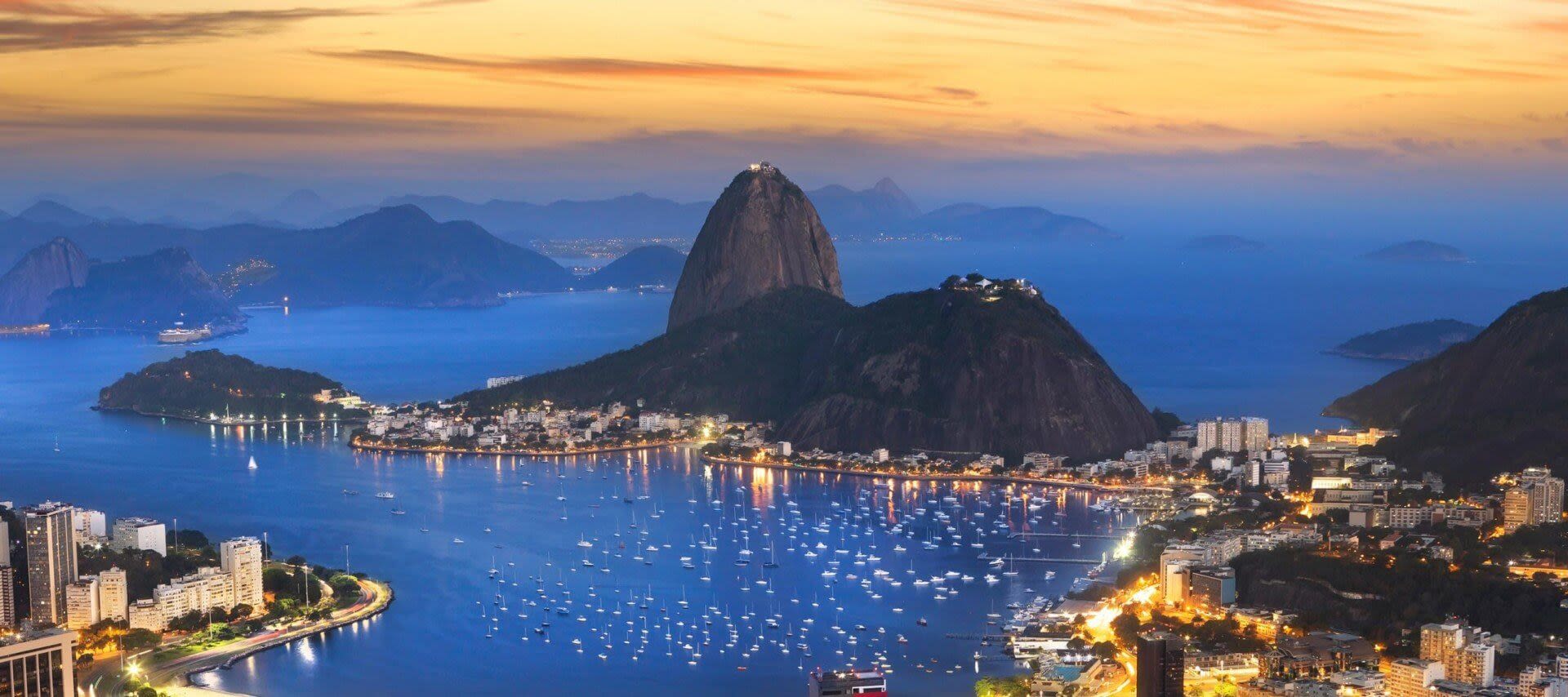South American tours for seniors offer a unique blend of adventure and relaxation, catering to the specific needs and preferences of older travelers. Imagine exploring the breathtaking landscapes of Patagonia, marveling at the ancient ruins of Machu Picchu, or cruising the pristine waters of the Galapagos Islands – all while enjoying comfortable accommodations and carefully planned itineraries. This guide delves into the essential aspects of planning a memorable and enriching South American journey for seniors, ensuring a safe, comfortable, and culturally immersive experience.
From choosing the right tour type and destination to understanding health and safety considerations and budgeting effectively, we cover everything you need to know. We’ll explore various tour options, highlight senior-friendly accommodations and transportation, and provide valuable tips on cultural sensitivity and packing essentials. Ultimately, our goal is to empower you to plan an unforgettable South American adventure tailored to your needs and desires.
Tour Destinations
South America offers a diverse range of experiences perfect for senior travelers seeking enriching adventures. Many destinations boast excellent accessibility and manageable climates, making them ideal for comfortable exploration. This section highlights some of the best options, considering factors like ease of travel, cultural richness, and stunning natural beauty.
Top South American Destinations for Seniors
Choosing the right destination is crucial for a memorable and enjoyable trip. Below are seven destinations that cater well to the needs and preferences of senior travelers, balancing adventure with relaxation.
| Destination | Cost (USD, per week, estimate) | Activities | Cultural Experiences |
|---|---|---|---|
| Cusco & Machu Picchu, Peru | $1500 – $3000 | Train journeys, moderate hikes (optional), exploring Inca sites | Inca history, vibrant local markets, traditional Peruvian cuisine |
| Galapagos Islands, Ecuador | $3000 – $6000 | Cruises, wildlife viewing (low-impact activities), snorkeling/diving (optional) | Unique wildlife encounters, learning about Darwin’s theories |
| Buenos Aires, Argentina | $1000 – $2500 | Tango shows, exploring neighborhoods, walking tours | Rich European history, vibrant art scene, delicious cuisine |
| Patagonia (Chile/Argentina) | $1500 – $4000 | Scenic drives, boat tours, moderate hikes (optional), wildlife viewing | Stunning landscapes, gaucho culture (Argentina) |
| Medellin, Colombia | $800 – $2000 | Walking tours, cable car rides, exploring parks and gardens | Modern city with colonial influences, friendly locals, vibrant nightlife (can be avoided if preferred) |
| Lake District, Chile | $1200 – $3000 | Boat trips, scenic drives, relaxing by the lake | Stunning lake and mountain scenery, opportunities for birdwatching |
| Lima, Peru | $900 – $2200 | Exploring historical sites, museums, culinary tours | Pre-Columbian history, colonial architecture, diverse gastronomy |
Machu Picchu for Senior Travelers
Machu Picchu, the iconic lost city of the Incas, presents a unique challenge and reward for senior travelers. While the high altitude and some uneven terrain may require careful planning, the experience is unforgettable. Many tour operators offer options that minimize strenuous activity, such as train journeys to the site and shorter, less challenging walks within the complex. The breathtaking views and the historical significance of the site make it a worthwhile destination, even with adjustments for physical limitations. Consider hiring a porter for assistance carrying luggage and supplies.
Galapagos Islands for Senior Travelers
The Galapagos Islands offer a truly remarkable experience for senior travelers seeking a wildlife-focused adventure. Luxury cruise options provide comfortable accommodations and accessible excursions. The islands’ unique ecosystem is relatively easy to explore, with many activities available at a leisurely pace. Low-impact activities like wildlife viewing from designated areas and gentle walks along the coast are readily available. Remember to check accessibility features of chosen cruises and consider travel insurance that covers potential medical emergencies.
Patagonia for Senior Travelers
Patagonia, with its dramatic landscapes of towering mountains, glaciers, and pristine lakes, is another incredible destination suitable for seniors. While some areas require more strenuous activity, there are plenty of accessible options. Scenic drives offer breathtaking views without demanding physical exertion. Boat tours allow for comfortable wildlife viewing and exploration of stunning fjords. Choosing accommodations in towns with good accessibility and opting for shorter, easier hikes will ensure a comfortable and enjoyable experience. Consider focusing on specific areas of Patagonia, rather than attempting to cover the entire region, to make the most of your time and energy.
Accommodation & Transportation
Choosing the right accommodation and transportation is crucial for a comfortable and enjoyable South American tour, especially for senior travelers. We’ve carefully considered factors such as accessibility, proximity to attractions, and ease of travel to ensure a stress-free experience. This section details the senior-friendly options available.
Senior-Friendly Accommodation Features
Senior-friendly accommodations prioritize accessibility and convenience. Features commonly include single-level rooms to avoid stairs, wider doorways and hallways for wheelchair access, grab bars in bathrooms, and emergency call buttons. Many hotels also offer roll-in showers and adjustable height beds. Proximity to medical facilities is another key consideration. Ideally, hotels should be within a reasonable distance of hospitals or clinics, ensuring swift access to medical care if needed. For example, a hotel in Cusco, Peru, might be chosen for its proximity to a reputable hospital while still being close to the city’s historical sites. Another example would be selecting a hotel in Buenos Aires, Argentina, that offers accessible rooms and is located near a well-regarded medical center.
Transportation Options for Seniors
Several transportation options cater to the needs of senior travelers. Private car services offer personalized and comfortable travel, allowing for flexibility and avoiding the potential stresses of public transport. Drivers can assist with luggage and provide a more relaxed journey. However, this option can be more expensive than others. Buses, while often more affordable, may not always be the most comfortable for extended journeys, especially for those with mobility issues. Train travel, on the other hand, can offer a smoother and more scenic experience, with potentially more comfortable seating than buses. The choice depends on individual preferences, budget, and the specific route. For instance, a scenic train journey through the Andes Mountains might be preferable to a long bus ride, while a private car might be more suitable for navigating bustling city centers.
Hotel Accessibility and Proximity to Attractions
| Hotel Name | Accessibility Features | Proximity to Attractions |
|---|---|---|
| Example Hotel, Cusco, Peru | Wheelchair accessible rooms, grab bars, roll-in showers, elevator | Walking distance to Plaza de Armas, close to major historical sites |
| Example Hotel, Buenos Aires, Argentina | Accessible rooms, ramps, adapted bathrooms, nearby medical center | Convenient location near Recoleta Cemetery and upscale shopping areas |
| Example Hotel, Rio de Janeiro, Brazil | Elevator access to all floors, accessible rooms, adapted bathrooms | Short taxi ride to Christ the Redeemer and Sugarloaf Mountain |
Cultural Sensitivity & Etiquette
Respectful travel is paramount when exploring the rich tapestry of South American cultures. Understanding and adhering to local customs ensures a positive experience for both you and the communities you encounter. This section provides essential etiquette tips for senior travelers to navigate South American interactions smoothly and respectfully.
South America boasts a diverse range of cultures, each with its own unique customs and traditions. What might be considered polite in one country could be deemed inappropriate in another. Therefore, a basic understanding of general South American etiquette, combined with a willingness to observe and learn, is key to fostering positive interactions.
Greetings and Introductions
Greetings vary across South America, but generally involve a handshake (often accompanied by a light kiss on the cheek in some countries). Direct eye contact shows engagement and respect. Addressing individuals formally (using titles like “Señor,” “Señora,” or “Señorita”) is generally preferred until invited to use first names. Learning a few basic Spanish phrases, such as “Buenos días” (good morning), “Buenas tardes” (good afternoon), and “Buenas noches” (good evening), will be greatly appreciated.
Dining Etiquette
Dining customs differ, but some common practices include waiting for everyone to be seated before beginning a meal, using cutlery correctly (often starting with the outermost utensils), and avoiding excessive noise while eating. It’s considered polite to try a little of everything offered and to compliment the host on the meal. Tipping is customary in many restaurants, usually around 10-15% of the bill.
Public Behavior
Public displays of affection are generally more reserved than in some other cultures. Loud conversations or boisterous behavior may be viewed as impolite. Respect personal space and avoid touching strangers unnecessarily. In many areas, punctuality is not always strictly adhered to, so allowing for some flexibility in scheduling is advisable.
Religious Practices and Traditions
South America is predominantly Catholic, with a strong influence of indigenous beliefs and practices. Respecting religious sites and customs is crucial. Dress modestly when visiting churches or religious sites, and avoid taking photographs without permission. Be mindful of local celebrations and festivals, and participate respectfully if invited.
Shopping and Bargaining
Bargaining is common in some markets and smaller shops, particularly in indigenous communities. However, always approach bargaining politely and respectfully, avoiding aggressive tactics. Remember that you are engaging in a cultural exchange, and a fair price benefits both parties. In larger stores and formal settings, bargaining is generally not expected.
Closing Notes
Planning a South American adventure for seniors requires careful consideration, but the rewards are immense. By understanding the various tour options, prioritizing comfort and safety, and respecting local cultures, you can create an enriching and unforgettable experience. This guide has provided a framework for planning, covering key aspects from destination selection and itinerary planning to health precautions and budgeting. Remember, a well-planned trip allows seniors to fully immerse themselves in the beauty and wonder of South America while enjoying a comfortable and safe journey. Embrace the adventure!




